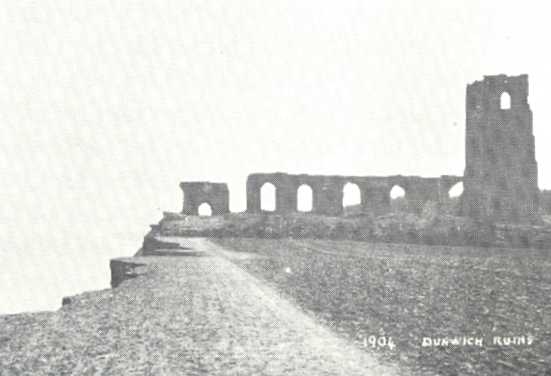In the spirit of the current confused governing situation in Ye Olde Unitede Kingedome, I bring you, faithful readers, the history of the ROTTEN BOROUGH, a (sadly) defunct peculiarity of the English political system. These parliamentary constituencies were those that had, over the centuries, lost enough population to make their voters greatly over-represented. Most were either bought in secret backbench deals in Parliament, passed from aristocratic father to dandified son, or lost in spirited, sandwich-inspiring games of the card game whist.
1.1: Old Sarum, the famous modern Stonehenge city of the Salisbury plain, at its (projected) height
Perhaps the most (in)famous of the rotten boroughs was Old Sarum, once the proposed site for a cathedral city that was later moved to Sailsbury (New Sarum). [Ed.: If they already had a New Sarum, why did they even need its Old namesake?] In 1831, the parliamentary district of Old Sarum held two seats in the House of Commons but only eleven registered voters, all absentee landowners. It had been this way for almost two hundred years, since the seventeenth century. Before every election, it was said, the Eleven met inside the ruins of the cathedral for a fortnight to determine, through a gamut of secret rituals, who the Chosen Members of Parliament would be. Reformers accused them of engaging in augury, drawing lots, professing of secrets, and ancestor worship, among other black and white magic, during these sessions.
1.2: The notorious 'half church of Dunwich', All Saints Anglican Church, as it appeared in 1904, by which time it only contained only half its original number of saints.
The borough of Dunwich (pronounced DUM-wig), in Suffolk, was a thriving port city when its seats were apportioned in 1298. In the late seventeenth century, however, most of the city had fallen into the sea. This Providential retribution was surely the consequence of the rum-drinking, sodomizing, and random lashing that occurred frequently on its streets and docks, suffering the same fate as the morality-based tectonic upheavals in Port Royal, Jamaica and Lisbon, Portugal. By 1832, Dunwich only had forty-four houses and one-half of an Anglican church. To visit his constituency, one early nineteenth-century MP, Snowden Barne, developed an early version of the diving bell, the famous 'Dunwich Water Devil'.
1.3: The 'Dunwich Water Devil'
* * *
Gatton, a Parliamentary borough in Surrey, was yet another borough of rot. One seat in in the constituency was sold in 1830 for 180,000 pounds sterling (coincidentally, the weight of local parish church!). This is not to say that free elections were unknown in Gatton. In 1816, Sir Mark Wood (Jr.), defeated a Mr. Jennings (his butler or valet, disputed) by a vote of one to nothing. The only three voters were Wood, Jr., Wood, Sr., and said manservant. How Wodehousian!
1.4: The 'Iron Burgess' reviews her personal guard before the proposed reoccupation of the rotten boroughs, 1982.
* * *
Sadly, the Reform Act of 1832 cleansed England of its fifty-seven rotten boroughs in one fell swoop, bringing to mind Hercules and his filthy Augean stables. On the 150th anniversary of the bill in 1982, however, Baroness Margaret Thatcher introduced a resolution in the Commons to restore all of the abolished boroughs for a week of Parliamentary action. These rotten seats would be auctioned off to the highest bidder at Christie's, with all proceeds going to charity. Sadly, it was not carried, despite high interest from Prince Charles, Elton John, and Richard Branson, and the boroughs were destined to remain yet another vanished relic of the high tide of Empire.
In the spirit of Elbridge Gerry, the famous salamander-fancier who brought England's borough-rot to our fair shores, I take leave until the next journey into the hollow recesses of the Wunderkammer.
In the spirit of Elbridge Gerry, the famous salamander-fancier who brought England's borough-rot to our fair shores, I take leave until the next journey into the hollow recesses of the Wunderkammer.





I love the idea if the electors of Old Sarum meeting in the ruins of the Cathedral!
ReplyDeleteIf you're interested, I typed up some more on Old Sarum here:
Old Sarum Business Park, Salisbury « Salisbury and Stonehenge